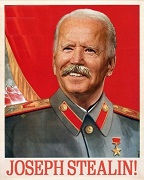|
The legendary storm-chaster, HEY GALE
|
|
|
|

|
| # ? May 14, 2024 03:41 |
|
The legendary captain, HEY SAIL.
|
|
|
|
Launch a rocket off a HEY RAIL Tank destroyer and rocket launcher on T-40 chassis Queue: Tank destroyers on the T-30 and T-40 chassis, 45 mm M-42 gun, SU-76 prototype, ZIK-7 and other light SPG designs, SU-26/T-26-6, SU-122 precursors, SU-122 competitors, Light Tank M5, Medium Tank M3, Tankbuchse 41, s.FH. 18, PzVII Lowe, Tiger #114, Chrysler K, A1E1 Independent, Valentine I-IV, Swedish tanks 1928–1934, Strv 81 and Strv 101, Pak 97/38, 7.5 cm Pak 41, Czechoslovakian post-war prototypes, Praga AH-IV, KV-1S, KV-13, Bazooka, Super Bazooka, Matilda, 76 mm gun mod of the Matilda, Renault FT, Somua, SU-122, SU-122M, KV-13 to IS, T-60 factory #37, D.W. and VK 30.01(H), Wespe and other PzII SPGs, Pz38(t) in the USSR, Prospective French tanks, Medium Tank M7, Churchill II-IV, GAZ-71 and GAZ-72, Production and combat of the KV-1S, L-10 and L-30, Strv m/21, Landsverk prototypes 1943-1951, Pz.Sfl.V Sturer Emil, PzII Ausf. G-H, Marder III, Pershing trials in the USSR, Tiger study in the USSR Available for request:  IM-1 squeezebore cannon IS-2 (Object 234) and other Soviet heavy howitzer tanks T-70B NEW  25-pounder PIAT  105 mm howitzer M2A1 15 cm sIG 33 10.5 cm leFH 18 PzII Ausf. J VK 30.01(P)/Typ 100/Leopard NEW  47 mm wz.25 infantry gun Strv m/40 Strv m/42 Strv m/21 Strv m/41 pvkv m/43
|
|
|
|
the world's becoming more...early modern https://www.theguardian.com/news/2017/sep/14/making-war-illegal-changed-the-world-but-its-becoming-too-easy-to-break-the-law whether this is any good for anyone remains to be seen
|
|
|
|
*suspiciously eyes protestant*
|
|
|
|
aphid_licker posted:*suspiciously eyes protestant* Better make sure all your windows are locked up.
|
|
|
|
HEY GAIL posted:Is it this? What's the difference between dark and bright shading?
|
|
|
|
Tevery Best posted:What's the difference between dark and bright shading?
|
|
|
|
The legendary farmer, HEY BALE
|
|
|
|
Mycroft Holmes posted:your father HEY MALE Don't forget his brother at the post office, HEY MAIL
|
|
|
|
Acebuckeye13 posted:Don't forget his brother at the post office, HEY MAIL
|
|
|
|
Acebuckeye13 posted:Don't forget his brother at the post office, HEY MAIL Dont you mean HEY DALE?
|
|
|
|
Jobbo_Fett posted:Dont you mean HEY DALE? Nah, he just ran into a wall
|
|
|
|
Siivola posted:I thought that was the unfortunate person who hosed up their fingers twisting wire in the 14th century. No, that was HEY FAIL.
|
|
|
|
The real surprise is when it turns out that captain Ahab was actually HEY WHALE.
|
|
|
|
Quick question on artillery. My understanding is that, in WWI, one German disadvantage was that they had focused too much on their very mobile 7.7cm field guns in the anticipation of a mobile conflict, and thus were at a disadvantage against Allied artillery (who used a lot more of the "heavy" 105mm and 155mm guns) in the static conflict that actually broke out. We see a similar divide in WWII between the light mobile guns and the big ones that are harder to move - except in that conflict "light" was around 105mm, and "heavy" was 155mm to 203mm. After WWII, the 105s were gradually retired, and there was just the 155mm and the 203mm guns, until the 203s were retired (due to rockets being considered a better option for anything the 155 can't handle) and only the 155 remains. I'm focusing primarily on "towed" guns here, not SPGs or assault guns, and I'm referring primarily to a "range band" of calibers rather than trying to focus on specific guns. What I'm wondering is what makes the difference - obviously the latest models benefit greatly from improved engineering, but I'm not seeing any major weight difference between a WWII 105 and the WWI predecessor. Was it just increasing mechanization that made the big guns more portable between wars, or were the improved carriages that much better? For that matter, were the guns more portable to begin with rather than the development of a "75mm won't cut it, we NEED a 105" mindset that made it possible?
|
|
|
|
|
My understanding was that Germany focused on heavier guns while the Allies focused on lighter guns, i.e. the French 75mm
|
|
|
|
OwlFancier posted:
What the hell Why
|
|
|
|
Westminster Palace, including the clock and tower, have been in urgent need of repairs for quite some time now.
|
|
|
|
|
GreyjoyBastard posted:What the hell They need to repair it.
|
|
|
|
Accumulated damage from being the target of every terrorist, foreign power, and alien invasion.
|
|
|
|
Gnoman posted:Quick question on artillery. My understanding is that, in WWI, one German disadvantage was that they had focused too much on their very mobile 7.7cm field guns in the anticipation of a mobile conflict, and thus were at a disadvantage against Allied artillery (who used a lot more of the "heavy" 105mm and 155mm guns) in the static conflict that actually broke out. I can't speak to anything else, but I can say that you're starting from a false principle. On the composition of forces, it's the opposite of what you think: one of the things the Germans had that nobody else did was a plentiful supply of gigantic super-heavy fortress-killer pieces that they used very successfully in Belgium and which were an absolutely key part of how their plan of attack worked as well as it did. Here's another point: a static war did not break out in August 1914. There were a few months of mobile warfare on the Western Front at either end of the war, during which the relative performance of everyone's field guns is neither here nor there because it was decided entirely by different factors. Once the conflict bogged down, sure, you've got a different war. But still, none of the actually relevant concerns were to do with how heavy the pieces themselves are, and how many heavies you can poo poo out of your factories. First it's about more dull things such as whether you actually have enough shells to feed the voracious appetite of a QF piece rattling away at 10 rounds per minute, and how well you're monitoring the wear rates of the barrels. Then it becomes about accuracy and tactics, not about how many guns or how many heavies; excepting super-heavies, both sides had roughly equal quantities of guns for the whole war and for the vast majority of it, they had enough guns to achieve (in theory) an adequate concentration to support a major offensive. (A lot of the senior commanders, Joffre in particular, made a great deal of having more and more heavy pieces, but that's a complete red herring - they'd gone down the tactical dead end of thinking that a days-long overwhelming bombardment could entirely remove the enemy and his fortifications from the map, which never worked out the way anyone hoped it might do.)
|
|
|
|
Trin Tragula posted:a plentiful supply of gigantic super-heavy fortress-killer pieces
|
|
|
|
HEY GAIL posted:hnnnnnnnnng The ghost of torrenstein looks over your shoulder and nods approvingly
|
|
|
|
HEY GAIL posted:direct vs indirect. Actual fighting vs money and supplies If that's the case the Dutch should just have a faded line that indicates they indirectly supported everyone at all times.
|
|
|
Trin Tragula posted:I can't speak to anything else, but I can say that you're starting from a false principle. On the composition of forces, it's the opposite of what you think: one of the things the Germans had that nobody else did was a plentiful supply of gigantic super-heavy fortress-killer pieces that they used very successfully in Belgium and which were an absolutely key part of how their plan of attack worked as well as it did. Here's another point: a static war did not break out in August 1914. There were a few months of mobile warfare on the Western Front at either end of the war, during which the relative performance of everyone's field guns is neither here nor there because it was decided entirely by different factors. Since two seperate people have brought it up, I concede that I was probably misinformed about the first part. That was more of a lead in to the "meat" of my question, but any correction of misinformation is appreciated.
|
|
|
|
|
GreyjoyBastard posted:What the hell It's broke. Needs fixing. The government are very angry about this, being as they're some of the few people in the country who hear it, what with working next door to it.
|
|
|
|
Trin Tragula posted:There were a few months of mobile warfare on the Western Front at either end of the war, during which the relative performance of everyone's field guns is neither here nor there because it was decided entirely by different factors. I've heard of the race to the sea but what was the end game equivalent? e: oh and could someone point out where the goddamn mortar is on the merkava? I keep looking online but I can't find the internal one.
|
|
|
|
GotLag posted:Accumulated damage from being the target of every terrorist, foreign power, and alien invasion. Oh, that makes sense. Don't forget the two mice fighting on it.
|
|
|
|
Milo and POTUS posted:e: oh and could someone point out where the goddamn mortar is on the merkava? I keep looking online but I can't find the internal one. On the Mk1 it was a external mount on the right turret cheek, basically just a 60mm infantry mortar bolted onto the turret.  The mortar on the Merkava Mk2 and Mk3 is the birdcage arrangement forwards of the left turret hatch. From what I could find in old, blurry photos it appears that the Mk2 typically had a extra canvas covering while the Mk3 was left bare.  I can't tell where they've moved it on the newer Mk4 turrets, the position appears to have been replaced by a optical sight. Though there's now a small oval hatch in the area, flush with the top of the armor, the mounting may have been changed into a simpler fixed-forwards mount that only has angle adjustments.
|
|
|
|
OwlFancier posted:It's broke. Needs fixing. The government is pretending to care because they want votes from racists and the new conception of british patriotism relies on getting dramatically offended about cheese and this is the only logical step up. A grown man actually said "Bong-o-gone-o that's a wrong-o" to other adult humans over this.
|
|
|
|
Milo and POTUS posted:I've heard of the race to the sea but what was the end game equivalent? The German Spring Offensives in 1918 were semi-mobile, and were followed up by the Hundred Days which was also semi-mobile (i.e. the front moved by about 8 miles each attack instead of 10 yards)
|
|
|
|
Gnoman posted:Quick question on artillery. My understanding is that, in WWI, one German disadvantage was that they had focused too much on their very mobile 7.7cm field guns in the anticipation of a mobile conflict, and thus were at a disadvantage against Allied artillery (who used a lot more of the "heavy" 105mm and 155mm guns) in the static conflict that actually broke out. We see a similar divide in WWII between the light mobile guns and the big ones that are harder to move - except in that conflict "light" was around 105mm, and "heavy" was 155mm to 203mm. After WWII, the 105s were gradually retired, and there was just the 155mm and the 203mm guns, until the 203s were retired (due to rockets being considered a better option for anything the 155 can't handle) and only the 155 remains. I'm going to guess that mostly it comes down to that the M101 105mm howitzer weighs only a little more than the French 75 (5000 vs 3500 lbs) and is much more effective with better performance. 1500 lbs probably makes a difference if you are relying on horses to pull your equipment around, probably not so much for a truck.
|
|
|
|
Gnoman posted:Quick question on artillery. My understanding is that, in WWI, one German disadvantage was that they had focused too much on their very mobile 7.7cm field guns in the anticipation of a mobile conflict, and thus were at a disadvantage against Allied artillery (who used a lot more of the "heavy" 105mm and 155mm guns) in the static conflict that actually broke out. We see a similar divide in WWII between the light mobile guns and the big ones that are harder to move - except in that conflict "light" was around 105mm, and "heavy" was 155mm to 203mm. After WWII, the 105s were gradually retired, and there was just the 155mm and the 203mm guns, until the 203s were retired (due to rockets being considered a better option for anything the 155 can't handle) and only the 155 remains. 105s were used extensively in every 20th century war and are still a part of most light infantry organizations (the current US variant is the 119A3 which is a hell of a gun and is actually BRITISH if you can believe it, they're all over the place). Aside from adding modern technologies (digitization, precision munitions, etc) there really isn't a whole lot of difference between a towed howitzer in 1917 and one today. Better metals allow for higher breech pressures and more rounds per barrel, which translates to bigger and more frequent booms, things get lighter, more compact, etc. bewbies fucked around with this message at 13:39 on Sep 17, 2017 |
|
|
Reading about Big Bertha and the shelling campaign it did on Paris is crazy. spectralent posted:The government is pretending to care because they want votes from racists and the new conception of british patriotism relies on getting dramatically offended about cheese and this is the only logical step up. Ive broken my record for rolling my eyes in utter disbelief this year from this nonsense. This has been on the cards now for the last few years and seems odd only now people are making a fuss. I've heard that bell a shitload of times from the ITV news broadcast so I'll live. I'm more concerned about the NHS because I am not insane...
|
|
|
|
|
Gnoman posted:Quick question on artillery. My understanding is that, in WWI, one German disadvantage was that they had focused too much on their very mobile 7.7cm field guns in the anticipation of a mobile conflict, and thus were at a disadvantage against Allied artillery (who used a lot more of the "heavy" 105mm and 155mm guns) in the static conflict that actually broke out. We see a similar divide in WWII between the light mobile guns and the big ones that are harder to move - except in that conflict "light" was around 105mm, and "heavy" was 155mm to 203mm. After WWII, the 105s were gradually retired, and there was just the 155mm and the 203mm guns, until the 203s were retired (due to rockets being considered a better option for anything the 155 can't handle) and only the 155 remains. America came out of WW1 with a huge variety of artillery pieces, including guns designed in America, Britain, France, and captured Germany pieces. By 1919 they had retired and standardized down to "only" seventeen different calibers. By 1941 there were 6 primary guns: 75mm, 105mm, and 155mm at the division and 155mm, 8-inch, and 240mm at the corps. There were definitely differences in engineering over the years. Back to the 1919 slimming down,which was headed by the Westervelt Board... from the book "Age of Great Guns": quote:"The Model 1904-1906 [4.7 inch] had a maximum range of 12,140 yards at 24 degrees elevation, but its carriage only permitted 15 degrees. The Westervelt Board recommended it be modernized by increasing its elevation to obtain the maximum. Its similarity to the French 155mm howitzer carriage, however, suggested that it ought to throw a heavier projectile like the howitzer's 95 pounds. Its ballistic similarity to the British 4.5 inch piece suggested, conversely, that its caliber be reduced in the interested of standardization, although the British 55-pound shell was deemed rather light" (they went with the British shell) and on the 155mm M1: quote:The 155mm gun, borrowed from the French in the first world war, was originally designated Model 1918 GPF... Some GPFs remained in service to defend Bataan before its fall... others [were] mounted on tank chassis... Its modernization to the M2 in 1940 added over 8000 yards to its World War I range.
|
|
|
|
INinja132 posted:The German Spring Offensives in 1918 were semi-mobile, and were followed up by the Hundred Days which was also semi-mobile (i.e. the front moved by about 8 miles each attack instead of 10 yards) Ahaha I said in my head that "I think it's the hundred days" and told myself no you dumbass, that's napoleon.
|
|
|
|
Squalid posted:I don't think there's any particular technology required except perhaps mass produced wire, but I suspect the trend on this graph is related to why barbed wire gets invented when it does: That is down largely to improvements in large-scale steel production, especially the movement from Bessemer to open hearth furnaces. It's not a question purely of amount but of quality. You need quite pure steel to draw it into wire, and then put additional stress on it by twisting & wrapping/unwrapping it.
|
|
|
|
Waroduce posted:what cool poo poo should i see in London apart from the imperial war musuem that isnt normal poo poo like big ben and the palace? The Museum of London is full of cool stuff that they've dug up over the years. The museum is in charge of overseeing all the archaeological work on new construction in the city, so more stuff is turning up all the time. Greenwich is great (and you can take a boat down there which is pretty fun), although crowded. Some other cool museums which aren't as famous are the Sir John Soans, (art and knickknacks) the Huntarian (bottled freaks and antique surgical instruments) and the Horniman (which boasts the worlds world's most badly stuffed walrus). When it comes to the classic tourist spots, the tower and St Paul's are worth your time, Buckingham Palace isn't. If you want curry, Whitechapel is better than Brick Lane, Tooting Broadway is better than either. Never go to a nightclub in Leicester Square.
|
|
|
|

|
| # ? May 14, 2024 03:41 |
|
What did Germany do to all of the WWI tubes, put them in storage or were they scrapped?
|
|
|







































